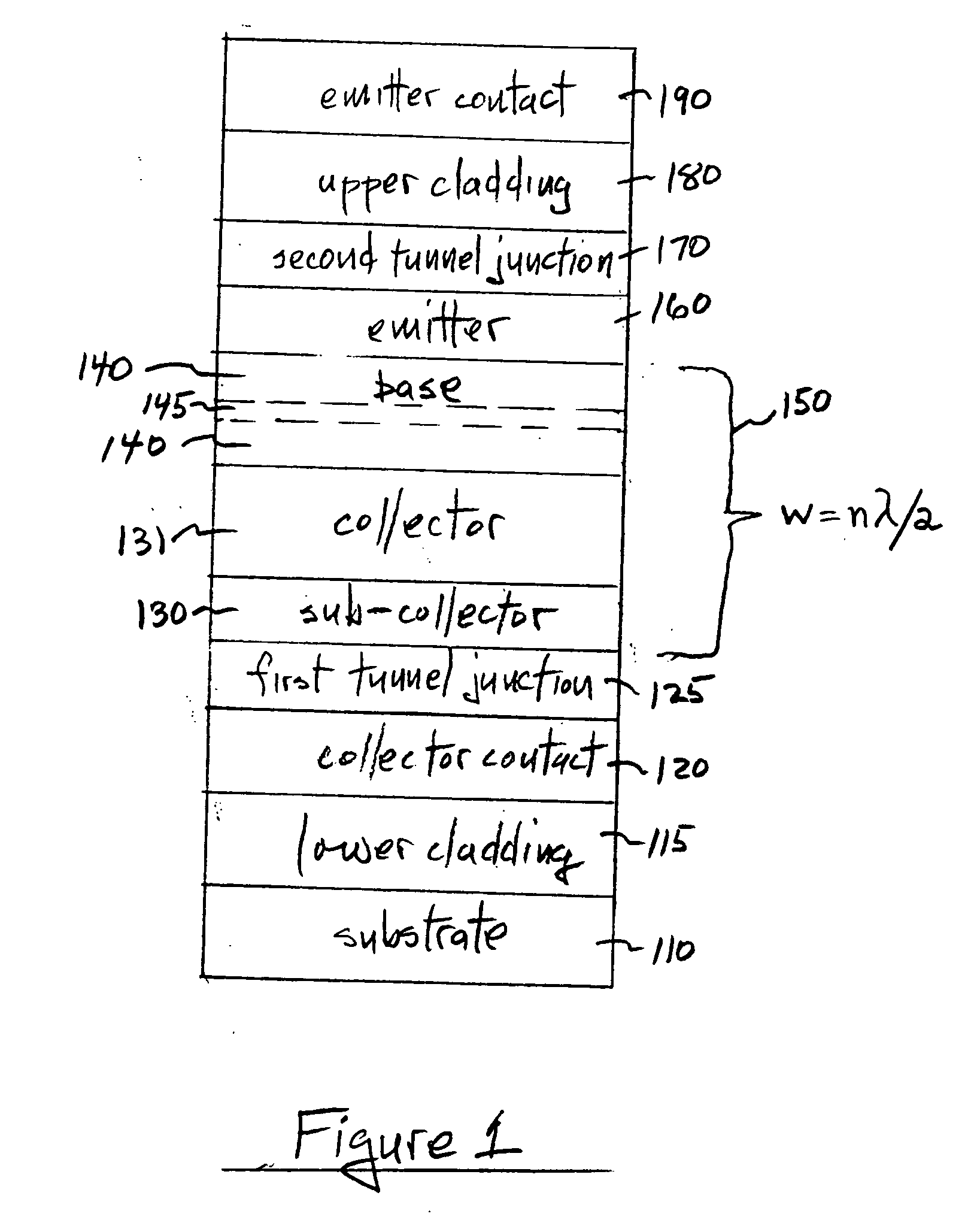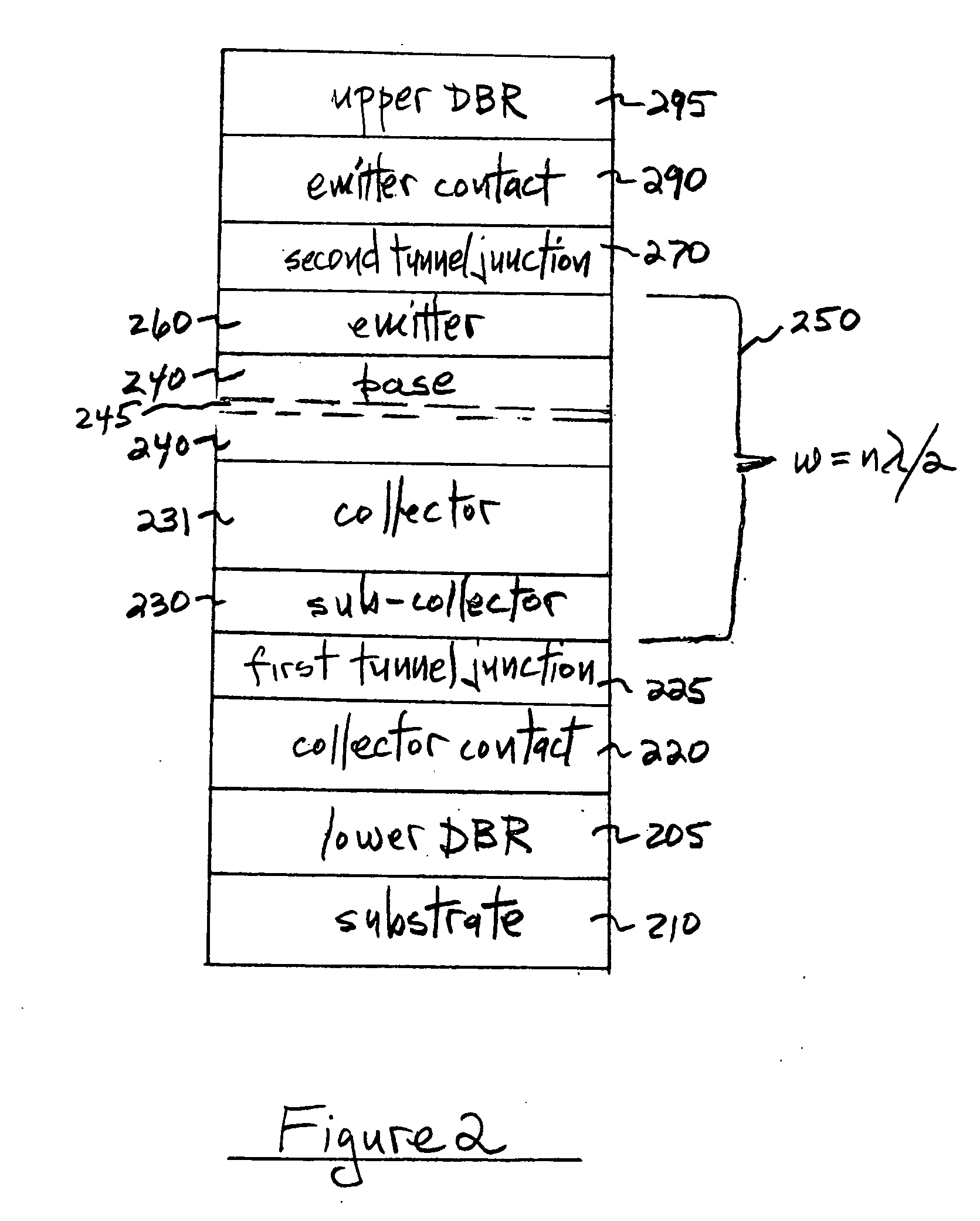PNP light emitting transistor and method
a light-emitting transistor and light-emitting transistor technology, applied in the field of semiconductor devices and methods, to achieve the effect of reducing the amount of acceptor-doped crystal required, reducing the resistance loss in the base region, and reducing the amount of free carrier absorption
- Summary
- Abstract
- Description
- Claims
- Application Information
AI Technical Summary
Benefits of technology
Problems solved by technology
Method used
Image
Examples
Embodiment Construction
[0020]FIG. 1 is a simplified diagram of the layer structure for an embodiment of the invention. The substrate 110 can be undoped or doped, and has deposited thereon n-type cladding layer 115, n-type collector contact layer 120, a first tunnel junction 125, p-type sub-collector 130 and collector 131 (which can be intrinsic or lightly doped p-type), n-type base 140 containing at least one quantum size layer 145 (e.g. quantum well and / or quantum dot layer(s)), p-type emitter 160, second tunnel junction 170, n-type upper cladding layer 180, and n-type emitter contact layer 190. When this FIG. 1 embodiment is employed as an edge-emitting p-n-p heterojunction bipolar transistor (HBT) laser, the waveguide region (bracket 150) can be enclosed in an optical resonant cavity of width w equal to nλ / 2, with n=1,2,3 . . . , and λ the characteristic emission wavelength. Note that the tunnel junctions 125 and 170 are preferably outside the active base region. In this embodiment, the first tunnel ju...
PUM
 Login to View More
Login to View More Abstract
Description
Claims
Application Information
 Login to View More
Login to View More - R&D
- Intellectual Property
- Life Sciences
- Materials
- Tech Scout
- Unparalleled Data Quality
- Higher Quality Content
- 60% Fewer Hallucinations
Browse by: Latest US Patents, China's latest patents, Technical Efficacy Thesaurus, Application Domain, Technology Topic, Popular Technical Reports.
© 2025 PatSnap. All rights reserved.Legal|Privacy policy|Modern Slavery Act Transparency Statement|Sitemap|About US| Contact US: help@patsnap.com



